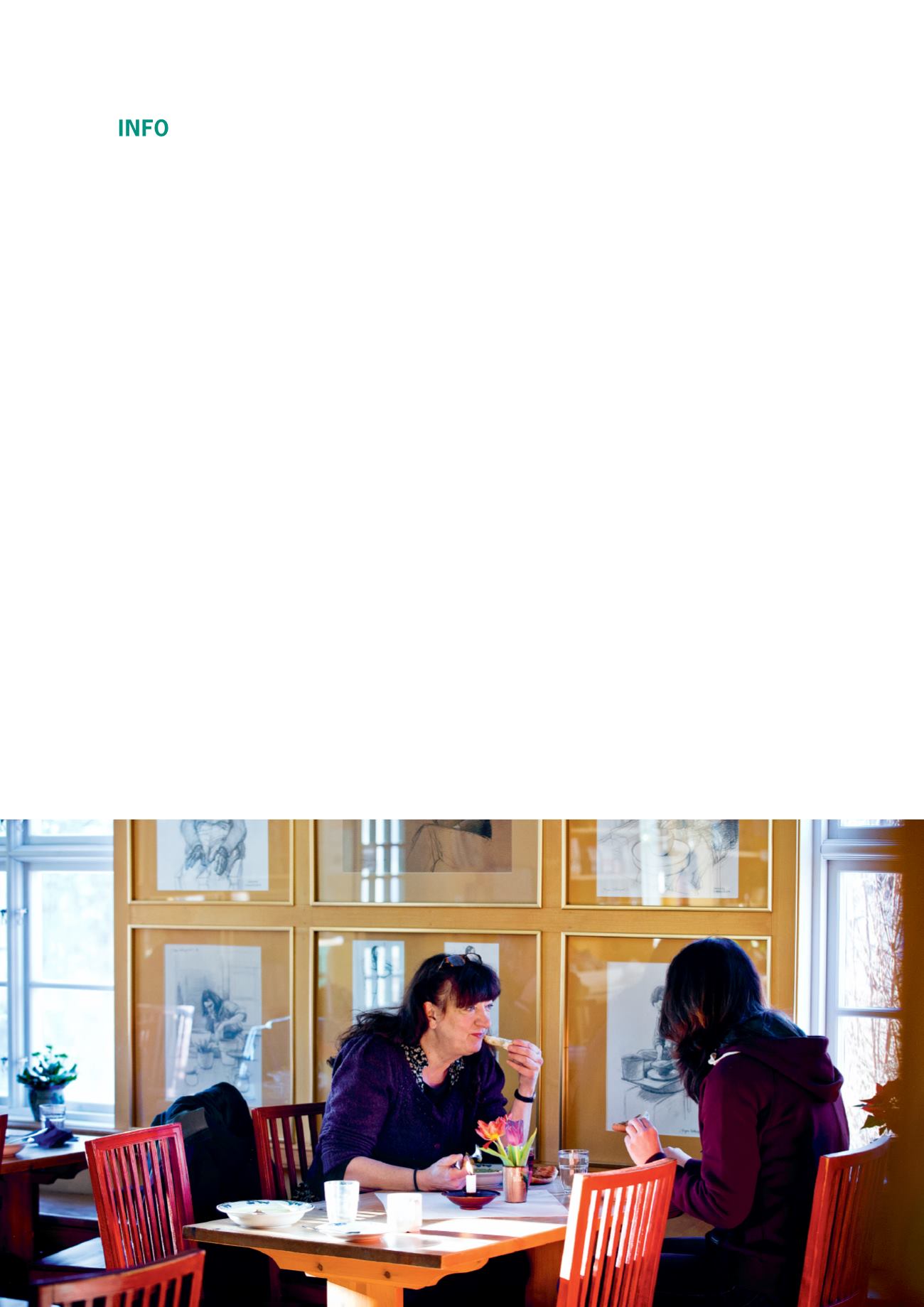
It’s the enormous importance that art has
for the survival of mankind that engages
me.
It was around
the turn of the 20th century
that young artists found their way to
Arvika and Lake Racken 35 kilometres
further north. The artistic heritage of
the Rackstad Museum dates back to the
artist Christian Eriksson, who grew up
in Taserud, where his father ran a small
farm and worked as a cabinetmaker.
Christian travelled around as an apprentice
to improve his carpentry skills, but ended
up in the art world through friends in the
arts in Paris.
The Rackstad Colony was a group
of friends who worked as artists. When
Gustaf Fjæstad (1868–1948) and his wife
Maja Fjæstad (1873–1961) first came
to Arvika in 1898 they rented Christian
Eriksson’s studio villa, Oppstuhage, which
he had built for himself and his wife
Jeanne Tramcourt when they returned to
Sweden from France. However, Gustaf
soon continued his artistic discovery in
Stockholm.
The Fjæstad couple later moved to
Kampudden by Lake Racken, where they
built their own house and studios. Besides
being a talented painter and graphic artist,
Maja was also skilled with textiles. She was
part of a group of enthusiasts who in 1922
founded the oldest arts and crafts shop in
Sweden, Arvika konsthantverk (Arvika
arts and crafts).
After the arrival of Gustaf and Maja,
Björn Ahlgrensson (1872–1918) moved
to Arvika with his wife Elsa. They settled
in Perserud, also by Lake Racken. A few
years later Fritz Lindström (1874–1962)
moved to the area. These artists, as well
as a few local painters like Alfred Ekstam
(1878–1935), Bror Sahlström (1869–1915),
Ture Ander (1881–1959) and Bror Lindh
(1877–1941), were the foundation of the
group of artists called the Rackstad Colony.
They were driven by romantic
nationalism and a longing for nature and
rural surroundings, as well as the search for
light, obscurity and melancholy. They were
also attracted by the opportunity to build
a home in the countryside where living was
cheap.
– These artists were young, angry, poor
and challenging, Lena says. They were
fascinated by nature and wanted to decode
its magic. They were interested in primitive
authenticity, the simple origins of things.
– I still believe in inviting and making
room for young artists. We have to
recognise change and development.
In line with this and for future projects,
she has begun inviting master’s degree
students from Swedish university colleges
of art, who will graduate in 2013 and have
a connection to Värmland.
– I’m convinced that I, despite having
seen so much and worked for so long with
art and culture, will be amazed to see what
they have to show. Expressions that are new
to us, that we haven’t seen before.
As an art museum, Lena also wants
the Rackstad Museum to help improve the
conditions for artists to make a living from
their art.
The Rackstad Museum
The Rackstad Museum,
Arvika: Opened in 1993
to gather and display
art and crafts tied to
the so-called Rackstad
Colony, which was
active in the area around
Arvika at the turn of the
20th century. The main
building is Haget, the
parental home of artist
Christian Eriksson. The
museum also includes
his own artists’ home,
Oppstuhage, and a
summer studio. Regular
temporary exhibitions.
Shop with arts and
crafts and literature from
Värmland. Café serving
soup lunches and a large
selection of homemade
cakes.
112 | NATURALLY


